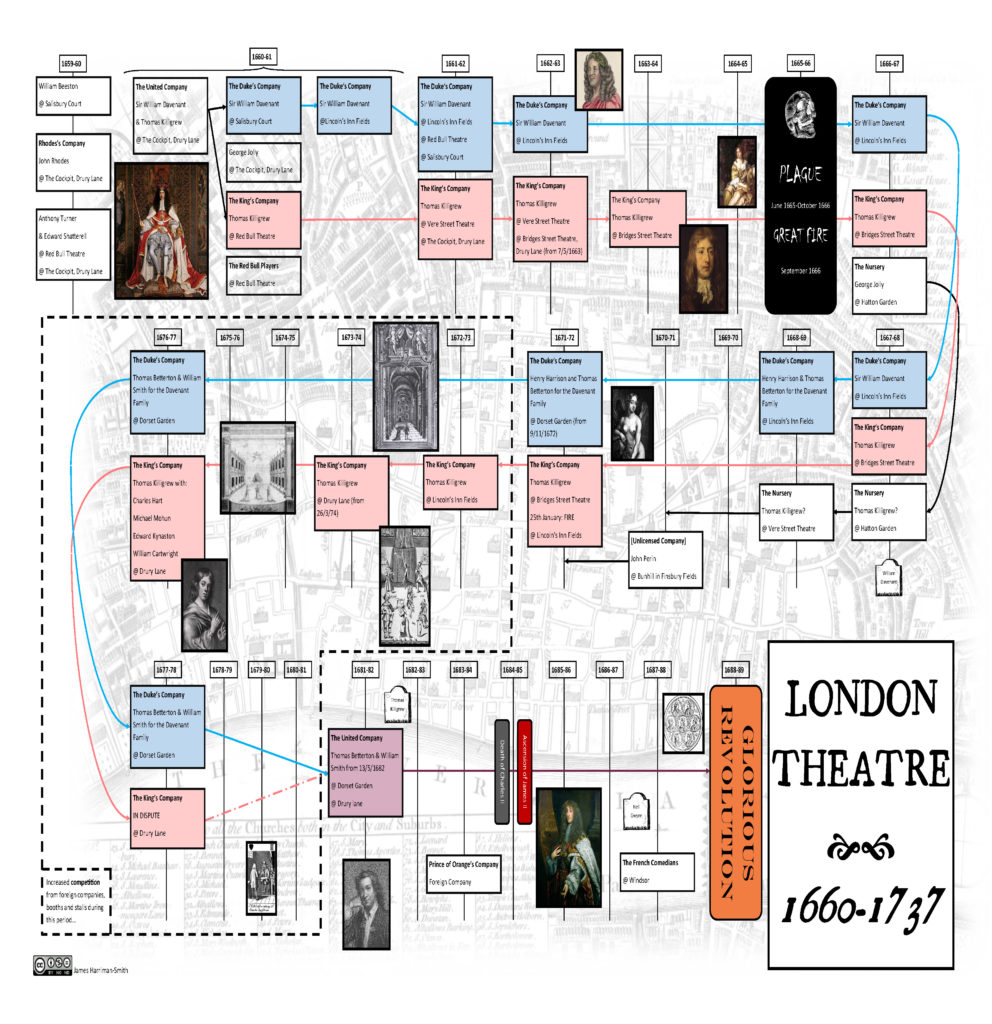I launched this third-year module at Newcastle University in 2018. This post provides an overview, a sample of various module materials, and some links to student work. If you have any feedback or questions about this work. Please get in touch with me.
Module Overview
This module begins with the Acts of Oblivion and ends with the Licensing Act. It covers the evolution of theatre in England (principally in London) between 1660 and 1737. Key module themes include: gender and sexuality (especially with regard to actresses), celebrity, antitheatrical prejudice, print and performance, historiography, and the passions. As a response to the relative obscurity of this period’s drama, and the notable lack of readily-available editions of plays by women of this period, students spend several hours a week during the first half of the module working on assessed group blogs, whose object is to introduce a work by a female dramatist of this period. The best of these blogs will be made public (see below), thus addressing general ignorance about this module’s subjects while simultaneously teaching students how to write for a general, web-based audience.
Typical Calendar
| Week | Lecture(s) | Reading |
| 1 | History and Theatre History | Background reading on: the period 1660-1737, and WordPress |
| 2 | Restoration Comedy | The Man of Mode (1676), The Rover (1677) |
| 3 | Restoration Tragedy | Venice Preserv’d (1682) |
| 4 | Anti-Theatre | The Immorality and Profaneness of the English Stage (1698), The Usefulness of the Stage and Amendments of Mr Collier (1698) |
| 5 | Actors and Audiences | This week’s seminar is replaced by a visit to the Georgian Theatre Royal in Richmond, North Yorkshire. |
| 6 | Humane Comedy | The Beaux’ Stratagem (1707) |
| 7 | She-Tragedy | Jane Shore (1714) |
| 8 | Pantomime | The Necromancer (1723), Harlequin Doctor Faustus (1724) |
| 9 | Sentimental Drama | The Conscious Lovers (1722) |
| 10 | Burlesque | The Tragedy of Tragedies (1731) |
| 11 | The Licensing Act of 1737 | Assorted materials: Daily Gazetteer 7 May 1737, The Festival of the Golden Rump (engraving); Lord Chesterfield’s Speech. |
Assessment
Blogs
Exemplary blogs:
In addition to the usual marking criteria, these blogs are assessed:
- According to a specific set of marking criteria, which can be downloaded;
- And at multiple points, so that students receive marks both for their individual writing and their contribution as part of a team effort.
Essays
To conclude the module, students compose essays of between 2 000 and 2 500 words in response to the following prompt:
Write an essay about one of the following, making detailed reference to at least one work studied on the module while also demonstrating a broad understanding of theatre history between 1660 and 1737:
[5 keywords follow, such as ‘money’, ‘body’, etc.]
Course Materials
In addition to the usual readers, lectures and seminar worksheets, I have produced a great deal of bespoke content for this module, some of which can be examined below:
A ‘Module Handbook’ in the form of a Restoration play
- My aim here was to familiarize students with the format of many of the texts they would be studying, by presenting them with familiar content (administrative details about this module) formatted in the same way that plays of this period were printed.
An A2 Timeline of the London Stage between 1660 and 1737
- This is very much a work in progress, and I am uncomfortably aware of both my reliance on The London Stage and several omissions and errors. If you think you’ve spotted anything that could be improved, do please write to me.

One response to “Between the Acts: English Theatre, 1660-1737”
[…] so on. The rest of this spreadsheet will eventually become my third-year module, Between the Acts. Because I can’t stop planning modules (and because I like working within the clean lines of […]